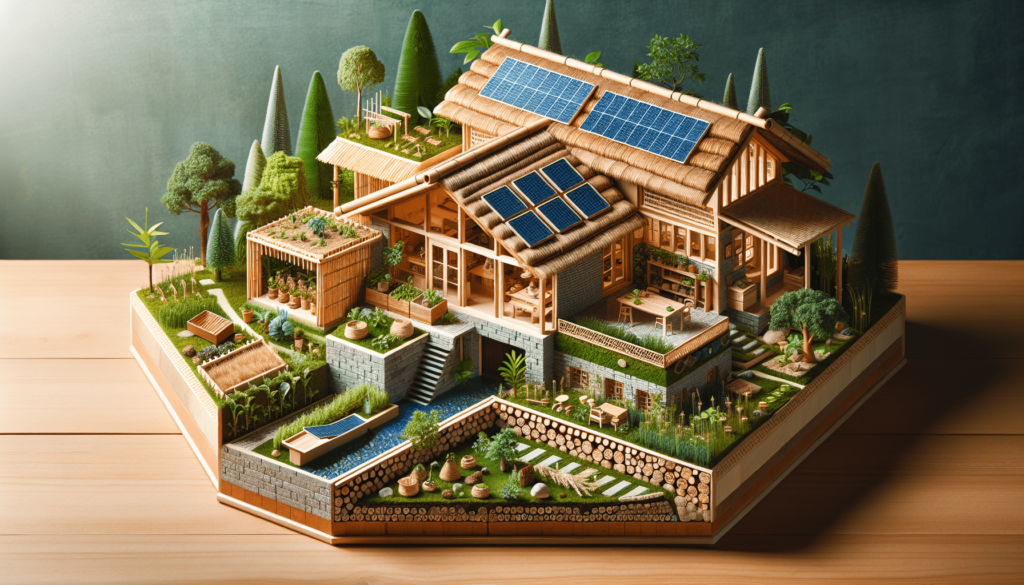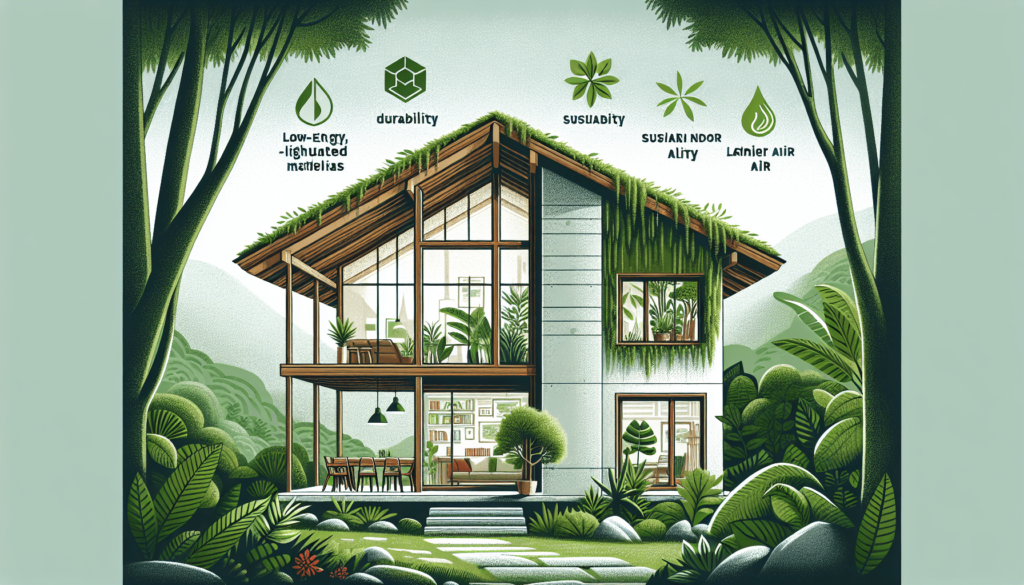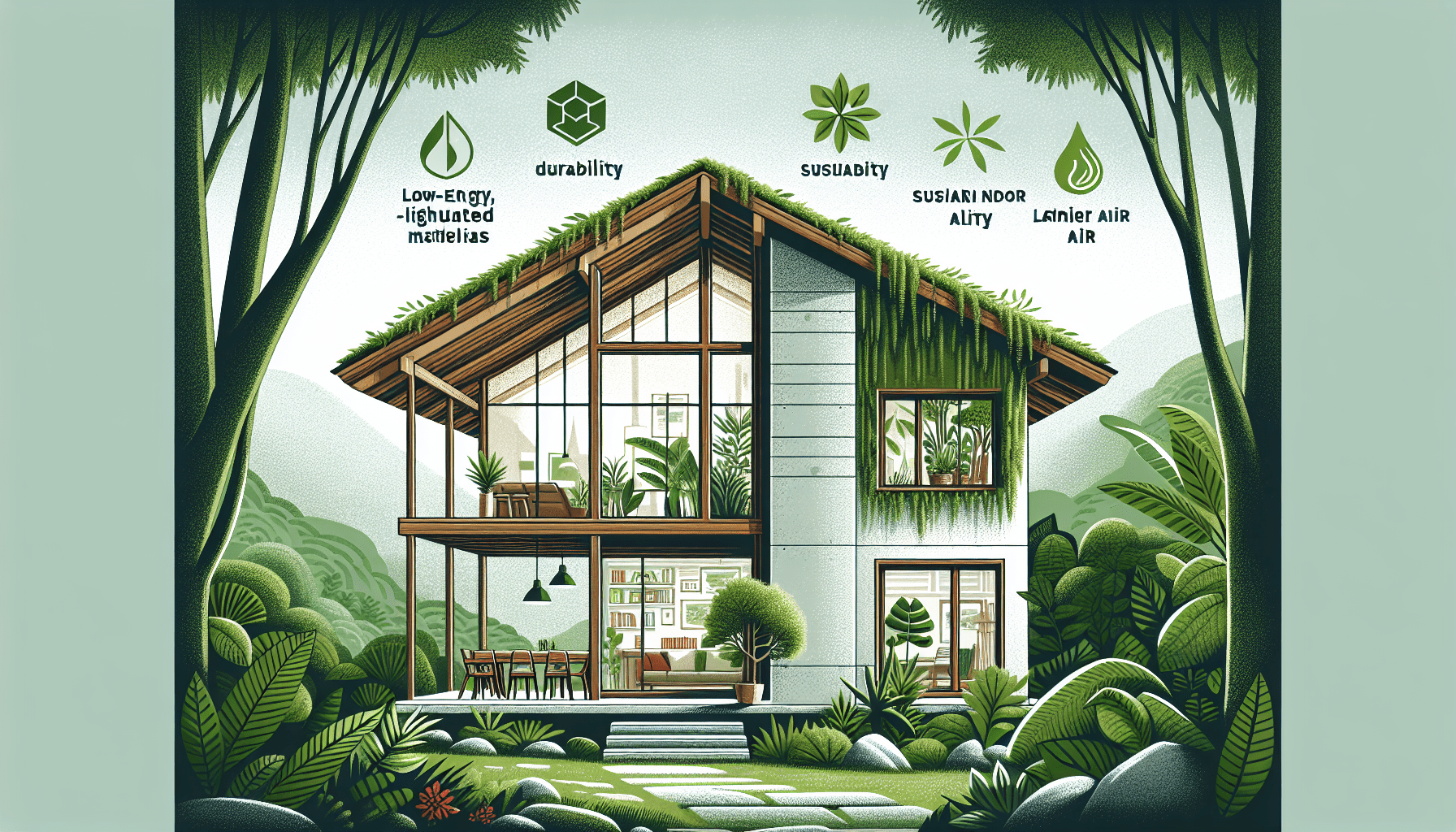Are you tired of living in homes made of conventional materials like concrete and steel? If so, then you might be interested in exploring the world of natural building techniques. Natural building techniques, such as using materials like straw, clay, and timber, offer a multitude of benefits that can not only enhance your living space but also contribute towards a more sustainable future. From improved insulation and energy efficiency to reduced environmental impact, the advantages are numerous. In this article, we will delve into the benefits of natural building techniques, providing you with a glimpse into the fascinating world of eco-friendly construction.
Sustainable Construction
Sustainable construction refers to building practices that minimize the negative impact on the environment and prioritize the use of renewable resources. By adopting these techniques, you can significantly reduce your carbon footprint. Traditional construction often relies heavily on energy-intensive materials and practices, releasing greenhouse gases into the atmosphere. However, sustainable construction uses renewable materials such as bamboo, straw, and recycled timber, which have a lower embodied energy and reduce their environmental impact.
In addition to reducing your carbon footprint, sustainable construction also conserves energy. By incorporating design elements that maximize natural light and ventilation, you can minimize the need for artificial lighting, heating, and cooling. This not only reduces energy consumption but also lowers your energy bills. Furthermore, sustainable construction uses energy-efficient systems such as solar panels and geothermal heating, harnessing renewable energy sources to power your building.
Another crucial aspect of sustainable construction is the use of local and renewable materials. By prioritizing locally sourced materials, you minimize the energy and resources required for transportation. This not only supports the local economy but also reduces the environmental impact associated with long-distance transportation. Moreover, using renewable materials like timber from sustainably managed forests ensures that you do not deplete finite resources.
Healthier Indoor Environment
One of the significant advantages of sustainable construction is its ability to create a healthier indoor environment. Traditional building materials and practices often contain toxins and allergens that can contribute to poor indoor air quality and negatively impact occupants’ health. On the other hand, sustainable construction eliminates or significantly reduces the use of these harmful chemicals, resulting in improved indoor air quality. This can have a positive effect on the respiratory health and overall well-being of those living or working in the building.
Additionally, sustainable construction materials are less likely to emit volatile organic compounds (VOCs) and other pollutants, creating a safer and healthier environment. By opting for natural building materials such as clay, straw, and recycled materials, you can effectively reduce the presence of harmful pollutants that can cause respiratory issues, allergies, and other health problems.
Apart from improving indoor air quality, sustainable construction also enhances occupant comfort. The materials used in sustainable construction often have excellent thermal properties, providing better insulation and temperature regulation. This, combined with proper design and ventilation, creates a comfortable indoor environment, reducing the reliance on heating and cooling systems. Occupants can enjoy consistent temperatures, improved acoustics, and a pleasant ambience, contributing to their overall comfort and well-being.

Cost-effectiveness
While sustainable construction may initially have higher upfront costs, it offers significant long-term cost savings. Lower construction and maintenance costs are one of the key benefits of sustainable construction. By using locally available materials and simplified construction techniques, you can reduce the expenses associated with transportation and complex construction methods. Additionally, sustainable buildings often require less maintenance due to the use of durable materials and efficient systems, resulting in long-term savings.
Another cost-saving benefit of sustainable construction is the reduction in energy bills. Energy-efficient design and systems, such as solar panels and advanced insulation, significantly decrease the amount of energy needed to power and regulate a building. This translates into substantial savings on energy bills over time. By minimizing reliance on traditional HVAC systems and maximizing passive design strategies, you can further reduce energy consumption and subsequent costs.
Moreover, sustainable construction offers the advantage of longer material lifespan. Compared to conventional building materials that may deteriorate over time, sustainable materials tend to be more durable and resilient. This longevity not only reduces replacement and repair costs but also contributes to the overall sustainability of the building. By choosing materials like reclaimed timber or natural stone, you can create a structure that withstands the test of time, saving you money in the long run.
Durability and Resilience
In addition to cost-effectiveness, sustainable construction also prioritizes durability and resilience. Sustainable buildings are designed to withstand natural disasters such as hurricanes, earthquakes, and floods. By utilizing robust construction techniques and materials with high resistance to external forces, these structures can better withstand severe weather events. This reduces the risk of damage or collapse, providing occupants with a safer environment.
Furthermore, sustainable construction materials are often less prone to deterioration compared to traditional materials. For instance, adobe or rammed earth walls have been used for centuries and have proven their longevity. By choosing sustainable materials that are resistant to decay, pests, and moisture, you can avoid costly repairs and renovations in the future. This long-term durability ensures that your building remains structurally sound and functional for years to come.
In terms of performance, sustainable construction consistently exhibits better long-term performance compared to conventional methods. Sustainable buildings are designed with a holistic approach, considering factors such as energy efficiency, thermal comfort, and indoor air quality. By integrating these elements, sustainable construction achieves optimal performance, resulting in a comfortable and functional space for occupants. The focus on long-term performance ensures that the building continues to meet the occupants’ needs while minimizing energy consumption and maintaining comfort.

Aesthetically Pleasing
Contrary to the misconception that sustainable buildings are purely functional, sustainable construction offers a wide range of design options that can create visually appealing structures. With advancements in design and construction techniques, sustainable buildings can be both practical and aesthetically pleasing. From modern and sleek designs to rustic and traditional aesthetics, sustainable construction provides endless possibilities to suit various architectural preferences and styles.
Additionally, sustainable construction emphasizes the integration with natural surroundings. By incorporating eco-friendly design principles, such as green roofs and vertical gardens, buildings seamlessly blend with their environment. This integration creates a harmonious relationship between the built and natural environment, resulting in a visually captivating space. Furthermore, sustainable buildings often prioritize the use of natural materials, accentuating the organic beauty and enhancing the overall aesthetic appeal.
Moreover, sustainable construction contributes to creating a soothing and harmonious ambiance. The use of natural materials like wood, stone, and clay invokes a sense of warmth and comfort, providing an inviting atmosphere. The incorporation of ample natural light and views to the outdoors also contributes to a calming environment. By creating spaces that promote well-being and connection to nature, sustainable construction enhances the overall experience within the building.
Energy Efficiency
Energy efficiency is a key component of sustainable construction. Sustainable buildings are designed to maximize energy efficiency, resulting in reduced energy consumption and lower carbon emissions. One of the primary ways sustainable construction achieves this is through superior insulation properties. By using well-insulated walls, roofs, and floors, buildings can retain heat during the winter and remain cool during the summer, reducing the need for artificial heating and cooling. This not only saves energy but also improves the overall comfort of occupants.
Another aspect of energy efficiency in sustainable construction is enhanced thermal performance. Sustainable buildings often incorporate passive design strategies, such as orientation, shading, and natural ventilation, to optimize thermal comfort without the need for mechanical systems. This reduces the reliance on HVAC systems, resulting in significant energy savings. Furthermore, sustainable construction utilizes energy-efficient appliances and lighting systems, lowering energy consumption without compromising functionality or comfort.
By prioritizing energy efficiency, sustainable construction reduces the reliance on non-renewable energy sources. Buildings are responsible for a significant portion of global energy consumption, and sustainable construction offers a viable solution to reduce this demand. By implementing renewable energy systems, such as solar panels and wind turbines, sustainable buildings can generate their own energy and even contribute excess energy back to the grid. This not only lowers the environmental impact but also offers potential cost savings by offsetting energy consumption.
Regenerative Impact on the Environment
Sustainable construction extends beyond simply reducing harm to the environment. It also has a regenerative impact by actively promoting ecological balance and preserving natural resources. By using renewable materials, sustainable construction helps preserve finite resources like timber and reduces the demand for materials with high environmental costs. Additionally, sustainable construction techniques minimize waste generation and encourage recycling and reusing materials, further reducing the depletion of resources.
Furthermore, sustainable construction promotes ecological balance by considering the impact on ecosystems. Green building practices, such as designing with native plants and creating habitats for wildlife, contribute to biodiversity conservation. This ensures that the building does not disrupt the surrounding ecosystem but instead supports and integrates seamlessly with it. By preserving natural habitats and promoting biodiversity, sustainable construction helps sustain ecosystems for future generations.
Promotes Local Economy
Sustainable construction plays a significant role in promoting the local economy. By utilizing locally sourced materials and engaging local artisans and businesses, sustainable construction provides a boost to the community. Choosing to work with local suppliers and craftspeople helps support and strengthen the local economy. This ensures that the money spent on construction stays within the community, benefiting local businesses and creating jobs.
Another way sustainable construction promotes the local economy is by increasing local self-sufficiency. By prioritizing the use of locally available resources, sustainable construction reduces the reliance on imported materials and resources. This decreases the cost of transportation and minimizes the carbon emissions associated with long-distance transportation. Moreover, by utilizing the skills and knowledge of local artisans, sustainable construction helps preserve traditional crafts and techniques, ensuring that they continue to be passed down through generations.
Engages Community and Fosters Skill Sharing
Sustainable construction offers numerous opportunities for community involvement and fosters skill-sharing. By engaging the community in the construction process, sustainable projects become a collaborative effort, resulting in a sense of ownership and pride. Community involvement can take various forms, such as participating in workshops or volunteering for specific construction tasks. This engagement not only strengthens social connections within the community but also empowers individuals by providing hands-on learning experiences.
Additionally, sustainable construction promotes empowerment through learning and knowledge exchange. By adopting natural building techniques, you have the opportunity to acquire new skills and knowledge that can be shared within the community. This skill-sharing creates a sense of empowerment and self-sufficiency, enabling individuals to apply these techniques to their own projects. It fosters a culture of learning and sustainability, encouraging the community to embrace eco-friendly practices beyond the realm of construction.
Moreover, sustainable construction projects often serve as platforms for educational initiatives. By showcasing sustainable techniques and systems, these projects inspire and educate others about the benefits of sustainable practices. This educative aspect fosters awareness and understanding, encouraging individuals and communities to make more sustainable choices in their own lives.
Cultural Preservation
Preserving cultural heritage is an essential aspect of sustainable construction. Sustainable techniques can revitalize local architectural heritage and help maintain cultural identity. By incorporating traditional building methods, sustainable construction can preserve cultural values, craftsmanship, and architectural styles that are unique to a particular region or community. This revitalization of local architectural heritage not only preserves the cultural fabric but also contributes to the sense of place and identity.
In addition to preserving traditional building methods, sustainable construction acknowledges the cultural significance of materials and aesthetics. By incorporating locally sourced natural materials and indigenous designs, buildings can reflect and celebrate the cultural identity of the community. This integration of cultural elements into sustainable construction creates a sense of pride and connection to the built environment.
Overall, sustainable construction offers a myriad of benefits that extend beyond environmental considerations. From cost-effectiveness to enhanced well-being, sustainable building practices prioritize long-term sustainability, durability, and cultural preservation. By incorporating these principles, you can create structures that not only minimize their negative impact on the environment but also contribute to a healthier, more sustainable, and aesthetically pleasing world.

